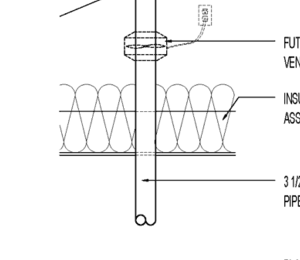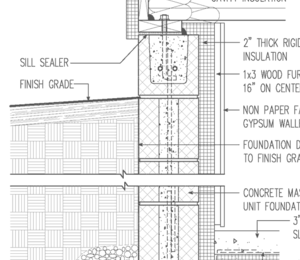Air sealing is imperative. The connection between concrete foundations and wood framing is a place prone to air leaks and moisture problems. Wood is often warped, and concrete is rarely flat. There are at least three places for air to leak in and probably a lot more. Leaky connections can mean energy, moisture, comfort, and IAQ problems. Extending the wall sheathing past these connections is a good first step whenever practical. Caulks, adhesives, spray foam, and gaskets can seal them up tightly.
Unless you live in the desert, the ground is always wet; and that ground water is always pushing its way in. Footing drains can carry away bulk groundwater, but foundations also have to disrupt capillarity. Water in the soil will wick all the way up to the roof framing if you let it. Capillary breaks such as brush-on damp-proofing, sill sealer, and rigid insulation block this process. A foundation is a bad place to cut corners because problems are expensive and complicated to fix after a house is finished.
It can cost 5 to 10 times more to retrofit a radon mitigation system than it does to do it during new construction. And there is no real way to predict what radon levels will be in a home, even with good soil mapping of radon. A straight chase from foundation to roof is important for passive radon systems (relying only on stack effect) and for hiding active ones (those with a depressurization fan).
For more information on radon and radon mitigation, see All About Radon.

This article is only available to GBA Prime Members
Sign up for a free trial and get instant access to this article as well as GBA’s complete library of premium articles and construction details.
Start Free TrialAlready a member? Log in



